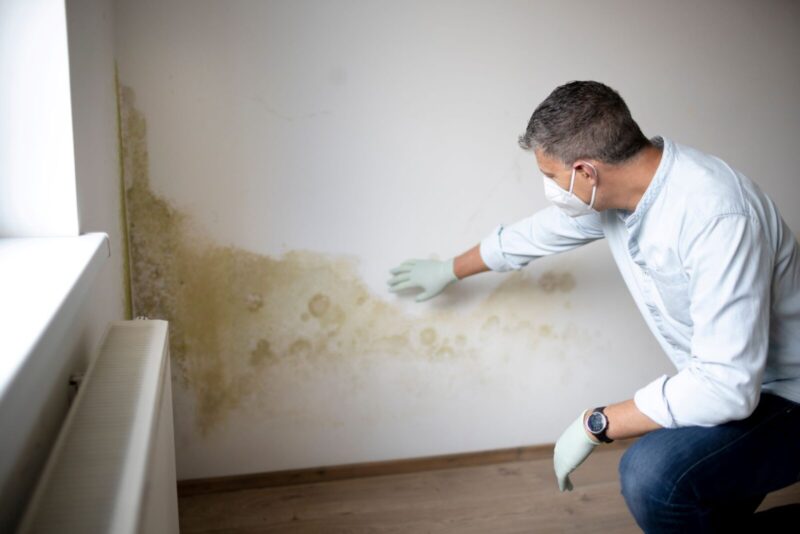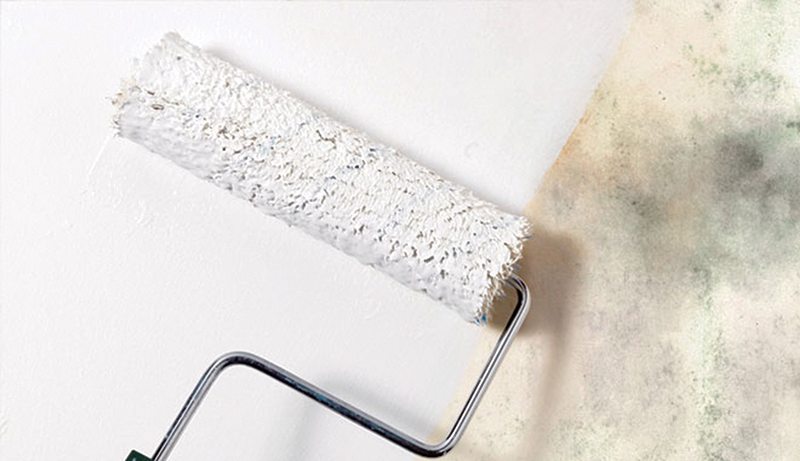Mould growth on walls is a common issue that homeowners face, particularly in areas with high humidity or inadequate ventilation. Beyond the aesthetic concerns, mould can pose health risks and compromise the structural integrity of your walls. Choosing the right paint is a crucial step in preventing mould growth and maintaining a healthy living environment. In this comprehensive guide, we’ll explore the factors that contribute to mould growth, the importance of selecting the right paint, and recommendations for the best paints to use to avoid mould on your walls.
Understanding the Causes of Mould Growth:

Before delving into the world of anti-mould paints, it’s essential to understand the factors that contribute to mould growth on walls. Mould thrives in damp and humid conditions, making bathrooms, kitchens, and basements particularly susceptible. Poor ventilation, water leaks, and inadequate insulation can exacerbate the problem, creating an ideal environment for mould spores to develop and spread. Additionally, certain building materials, such as drywall and wood, are more prone to mould growth than others.
If the cause of the mould is structural to the property, then choosing the right paint might not be enough, and further action might need to be taken. For tenants, this is the responsibility of your landlord. If a landlord ignores these issues, then they are ignoring their obligation to the tenant, and the tenant has the option of starting disrepair claims against the landlord.
The Role of Paint in Mould Prevention:
Painting your walls with the right type of paint can be an effective way to prevent mould growth. Anti-mould or mould-resistant paints typically contain additives that inhibit the development of mould and mildew. These additives work by creating a surface that is inhospitable to mould spores, disrupting their growth cycle and preventing them from taking hold on your walls. When combined with proper ventilation and moisture control, using the right paint becomes an integral part of a comprehensive mould prevention strategy.
Key Features of the Best Anti-Mould Paints:

- Mildewcides and Fungicides: The best anti-mould paints are formulated with mildewcides and fungicides. These additives actively inhibit the growth of mould and mildew on painted surfaces. Look for paints that explicitly mention these ingredients in their formulations.
- Moisture Resistance: Moisture is a primary factor contributing to mould growth. High-quality anti-mould paints often have moisture-resistant properties, helping to create a protective barrier against water infiltration. This is particularly important in areas prone to dampness, such as bathrooms and basements.
- Breathability: While preventing moisture is crucial, it’s equally important to allow walls to breathe. A breathable paint allows water vapor to escape, preventing condensation and reducing the likelihood of mould growth. Look for paints that strike the right balance between moisture resistance and breathability.
- Washability: Mould-resistant paints should be easy to clean without compromising their effectiveness. Washable paints are essential in areas with high humidity or where regular cleaning is necessary. This feature ensures that the paint retains its protective properties over time.
- Low VOC Formulas: Volatile Organic Compounds (VOCs) are chemicals that can be released into the air from some paints, contributing to indoor air pollution. Opt for anti-mould paints with low or zero VOC formulations to promote a healthier indoor environment.
Best Paints for Mould Prevention:

- Zinsser Perma-White Mold & Mildew-Proof Interior Paint: Zinsser Perma-White is a popular choice for mould prevention. It offers a durable finish, contains a mildewcide, and is moisture-resistant. The paint is also scrubbable, making it suitable for high-moisture areas.
- Benjamin Moore Aura Bath & Spa Paint: Specifically formulated for high-humidity environments, Benjamin Moore Aura Bath & Spa Paint is resistant to mildew and provides a luxurious matte finish. It is engineered to withstand moisture without compromising its anti-mould properties.
- Behr Premium Plus Ultra Stain-Blocking Paint and Primer in One: Behr’s Premium Plus Ultra is known for its stain-blocking capabilities, and it also offers excellent mould resistance. The paint provides a durable finish, making it suitable for areas prone to moisture and potential mould growth.
- Valspar Ultra Kitchen and Bath Enamel: Valspar Ultra is designed for use in kitchens and bathrooms, offering mould and mildew resistance. It provides a tough finish that is resistant to stains and moisture, making it an ideal choice for areas with high humidity.
- Dulux Easycare Bathroom: Dulux Easycare Bathroom paint is formulated to resist moisture and steam, making it an excellent choice for bathrooms. It contains MouldTec technology, which actively prevents mould growth on the painted surface.
Tips for Application:
- Surface Preparation: Ensure that the surface is clean, dry, and free of existing mould before applying anti-mould paint. Proper surface preparation is essential for the paint to adhere effectively and provide lasting protection.
- Ventilation: Proper ventilation is critical in preventing mould growth. Use exhaust fans, open windows, and maintain good airflow in areas prone to humidity. Anti-mould paint works best when combined with adequate ventilation practices.
- Multiple Coats: Follow the manufacturer’s recommendations for the number of coats required. Applying multiple coats ensures that the anti-mould additives are distributed evenly across the surface, enhancing their effectiveness.
- Regular Maintenance: Even with mould-resistant paint, it’s important to address any water leaks promptly and perform regular maintenance. Inspect painted surfaces periodically and address any issues to ensure the ongoing effectiveness of the mould-resistant properties.
Conclusion:
Choosing the right paint is a proactive and effective measure in the battle against mould growth on walls. High-quality anti-mould paints, when combined with proper ventilation and moisture control, can create a resilient barrier against mould and mildew. Whether you opt for Zinsser Perma-White, Benjamin Moore Aura, Behr Premium Plus Ultra, Valspar Ultra, or Dulux Easycare, the key lies in selecting a paint that aligns with your specific needs and the environmental conditions of the intended application. By investing in the best paint for mould prevention, you not only enhance the aesthetic appeal of your walls but also contribute to a healthier and more comfortable living environment for you and your family.


